
View from the accommodation
In June last year, seven first year Conservation Studies students and Jennifer Dinsmore, their Stone Conservation Tutor, visited Nikortsminda to work with Georgian colleagues, Elene Torgvaidze and Saba Tsikolia, on the cathedral of St Nicholas, which has been undergoing conservation over the last six years.
They worked on the plinth, comprised of three steps, at the east end of the church and were able to carry out the sequence of processes that are in use throughout the exterior of the building in conjunction with their Georgian colleagues. The aim of the conservation programme is to remove cement pointing and fills, carried out during the reconstruction of the building following a catastrophic earthquake in the 1990s, and to replace it with lime based grouts and mortars to consolidate the structure, to avoid the damaging effects of water ingress and to reduce the physical and visual impacts of the hard, rigid and inexpertly applied repairs.
For the students, the experience of working on a real project, on a building of considerable significance, with the guidance of the skilled and experienced local team was invaluable and having the opportunity to spend time in the beautiful and unspoilt environment of Nikortsminda was equally memorable.
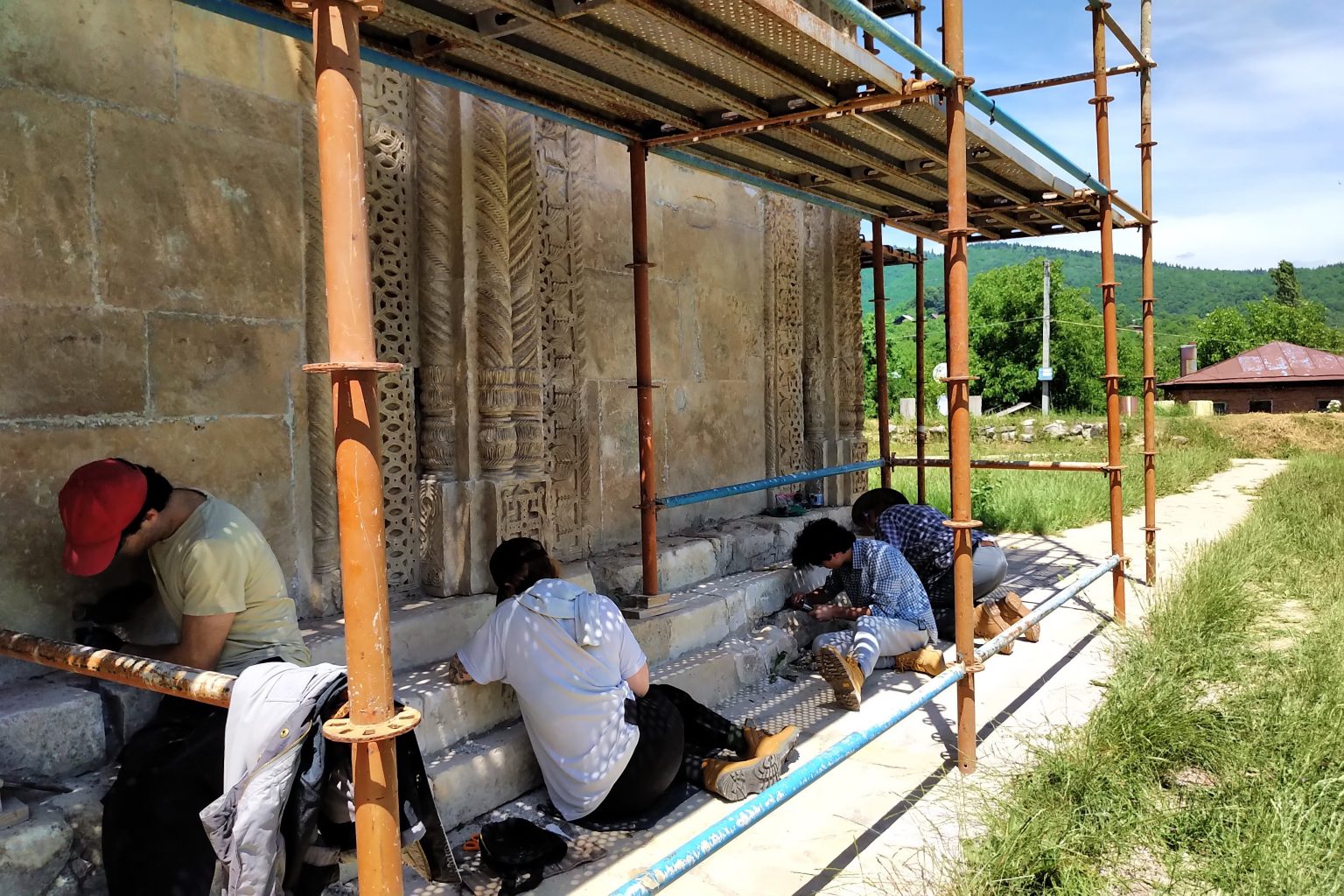
Students removing cement from the steps
The first stage in the conservation process was to remove cement fills and pointing mortar by working carefully with hammers and chisels. In some areas there were large areas of cement, holding pieces of stones that had been badly fractured during the earthquake. In some instances, it was necessary to remove pieces of stone so that they could be subsequently reset and realigned.
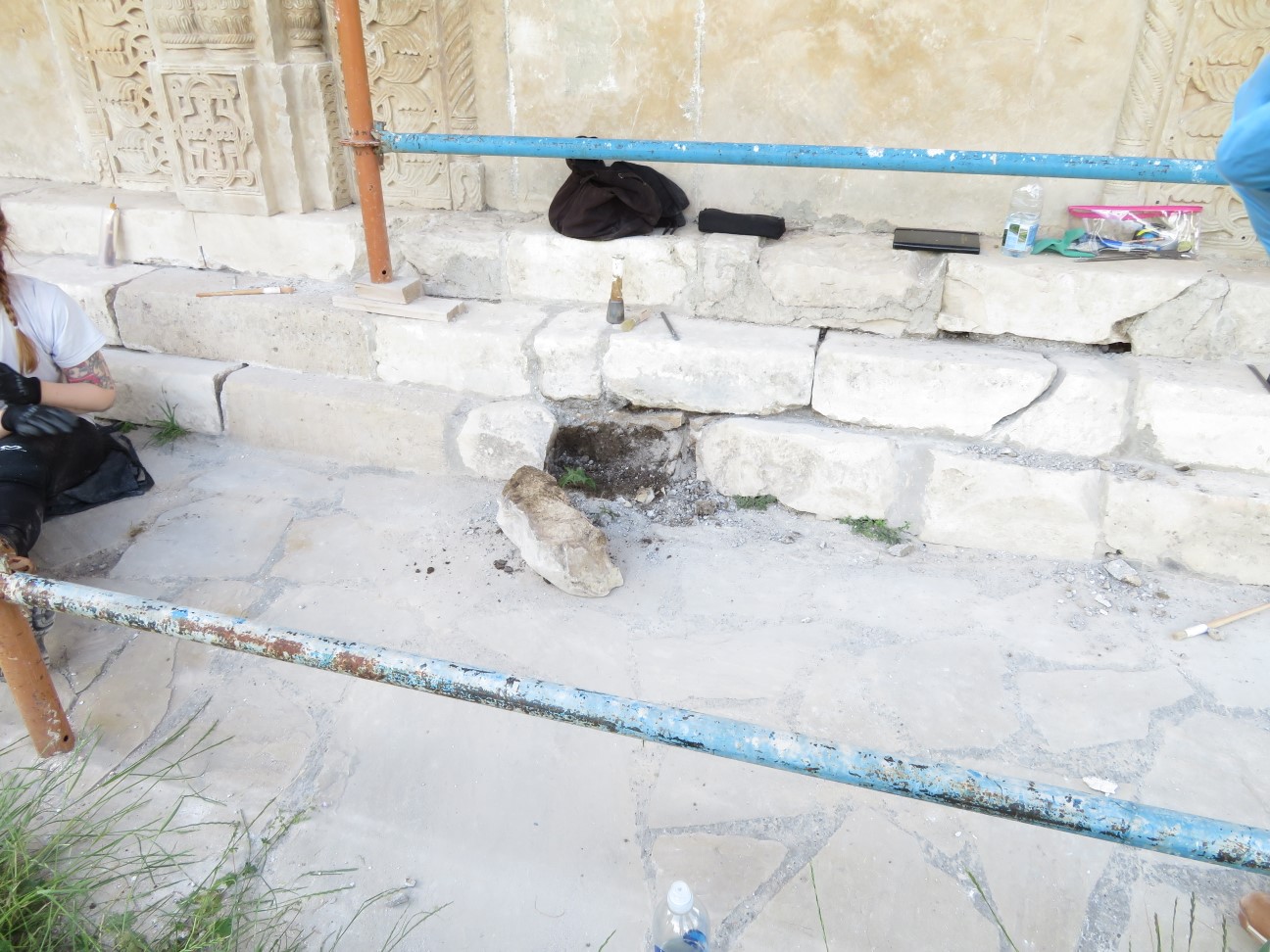
Stone fragment removed for resetting
Once all of the cement had been removed, the plinth was thoroughly cleaned with compressed air and also with water to remove debris that could interfere with the bonding of the lime mortars.
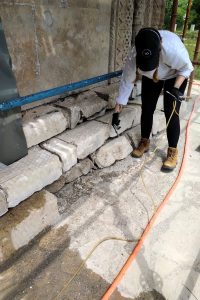

L-R: Cleaning with compressed air and cleaning with water
The group were then shown the processes of mixing and using hydraulic lime based injection grout which was fed into the voids behind and between the stone blocks. The function of the grout is to consolidate the steps forming the plinth and to reduce water ingress. The final stage in the treatment involved filling and pointing gaps between and around the stone blocks using a lime mortar mix. This was worked flush with the surface to avoid water pooling on the steps and to help create a cohesive appearance.
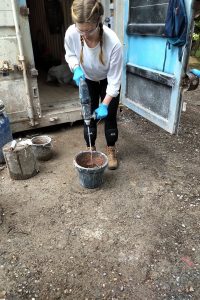
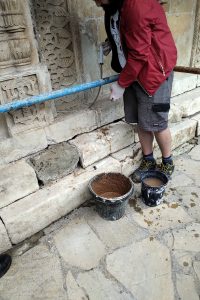
L-R: Mixing grout; Saba injecting grout into gaps
The students also carried out some cleaning of the floor in the interior of the church when the weather was wet. This involved using a fine spray of water with small spatulas to remove drips of wax and other accretions.
Whilst on the study visit, the students were able to visit the extraordinary cathedrals of Bagrati and Gelati and examine the very different approaches to conservation that have been used.
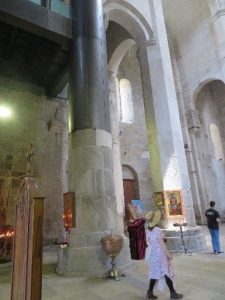
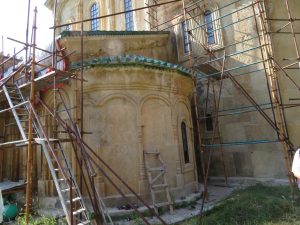
L-R: Bograti Cathedral: modern insertion; Gelati Cathedral: replacement glazed roof tiles
The study visit was a valuable opportunity for the students to experience site work first hand, and also experience working in a team in another country. In particular, the students learnt about the types of damage that can occur on limestone structures through the use of concrete repair materials and they learnt about a number of important stone conservation techniques and materials, such as lime based mortars.
The Conservation Department are planning future collaborations with their colleagues in Georgia, including the possibility of a summer placement for two students who have finished the second year of the Conservation Studies course, providing more in depth training and experience.


